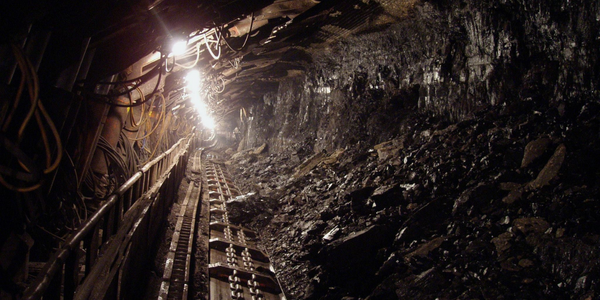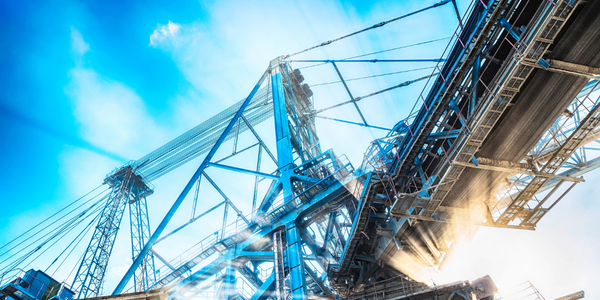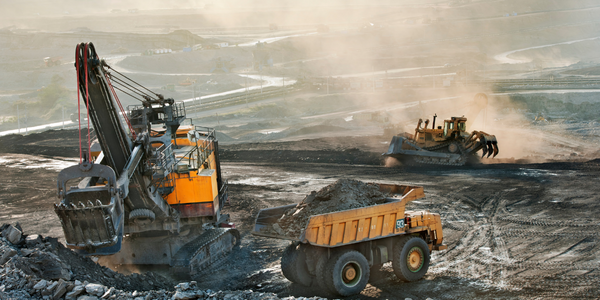技术
- 分析与建模 - 数字孪生/模拟
- 传感器 - 全球定位系统
适用行业
- 建筑与基础设施
- 矿业
适用功能
- 采购
- 产品研发
用例
- 施工管理
- 数字孪生
服务
- 系统集成
关于客户
客户 Altynalmas 是哈萨克斯坦的一家黄金生产商。作为拥有大量天然矿产的亚洲采矿业的推动者,哈萨克斯坦正在开发其采矿基础设施,以勘探和利用这些储量。当钻探和地质研究显示阿克莫拉周边地区存在金矿石时,阿尔提纳尔马斯投资扩大了资源开采业务。由于附近已有 3 家工厂,该组织宣布招标,将矿石加工年产量提高至 500 万吨。该项目耗资 2.3 亿美元,包括建设一座新的黄金加工厂、一座水坝、可容纳 600 人的住宿营地、供水管道和一座 220 千瓦变电站。
挑战
AAEngineering Group 负责设计、采购和建造位于哈萨克斯坦阿克莫拉地区阿克苏的一座新黄金加工厂。该项目是黄金生产商 Altynalmas 计划的一部分,旨在将矿石加工年产量扩大至 500 万吨。该项目耗资 2.3 亿美元,包括建设一座新的黄金加工厂、一座水坝、可容纳 600 人的住宿营地、供水管道和一座 220 千瓦变电站。面临的挑战是升级现有的能源和采矿基础设施,确保环境保护和职业安全,并确定最佳施工地点,要求在邻近矿坑和铀坝之间建立 1,000 米的卫生保护区。新工厂还需要在设备和材料方面与现有加工设施实现互操作,并与操作系统无缝集成。此外,AAEngineering 还面临着满足技术要求的挑战,需要在紧迫的时间内满足客户的数字矿山计划,而在 COVID-19 大流行期间协调远程团队则使情况变得更加复杂。
解决方案
AAEngineering 利用 Bentley 的开放应用程序使用 ProjectWise 建立了协作设计平台。他们使用激光扫描和无人机 (UAV) 来勘察现有设施和新建筑工地,并使用 ContextCapture 处理捕获的图像。根据调查数据,他们评估了土方工程并在 OpenRoads 中生成了数字地形模型。然后,他们使用 OpenPlant 将现有和新的管道布局和设备连接数字化,为客户开发多个概念 3D 模型。根据客户的规格,AAEngineering 使用各种软件应用程序来组装管道和结构模型以及住宿营地。然后,他们将这些模型与 OpenBuildings Designer 中的通用工厂模型集成。 AAEngineering 使用 ContextCapture 将每周无人机捕获的图像处理为实景网格,并将模型与 SYNCHRO 4D 同步以进行施工模拟和调度。 LumenRT 和 iTwin 服务的结合促进了视觉冲突检测,并提供了基于云的平台来建立数字孪生。
运营影响
数量效益

Case Study missing?
Start adding your own!
Register with your work email and create a new case study profile for your business.
相关案例.

Case Study
IoT System for Tunnel Construction
The Zenitaka Corporation ('Zenitaka') has two major business areas: its architectural business focuses on structures such as government buildings, office buildings, and commercial facilities, while its civil engineering business is targeted at structures such as tunnels, bridges and dams. Within these areas, there presented two issues that have always persisted in regard to the construction of mountain tunnels. These issues are 'improving safety" and "reducing energy consumption". Mountain tunnels construction requires a massive amount of electricity. This is because there are many kinds of electrical equipment being used day and night, including construction machinery, construction lighting, and ventilating fan. Despite this, the amount of power consumption is generally not tightly managed. In many cases, the exact amount of power consumption is only ascertained when the bill from the power company becomes available. Sometimes, corporations install demand-monitoring equipment to help curb the maximum power demanded. However, even in these cases, the devices only allow the total volume of power consumption to be ascertained, or they may issue warnings to prevent the contracted volume of power from being exceeded. In order to tackle the issue of reducing power consumption, it was first necessary to obtain an accurate breakdown of how much power was being used in each particular area. In other words, we needed to be able to visualize the amount of power being consumed. Safety, was also not being managed very rigorously. Even now, tunnel construction sites often use a 'name label' system for managing entry into the work site. Specifically, red labels with white reverse sides that bear the workers' names on both sides are displayed at the tunnel work site entrance. The workers themselves then flip the name label to the appropriate side when entering or exiting from the work site to indicate whether or not they are working inside the tunnel at any given time. If a worker forgets to flip his or her name label when entering or exiting from the tunnel, management cannot be performed effectively. In order to tackle the challenges mentioned above, Zenitaka decided to build a system that could improve the safety of tunnel construction as well as reduce the amount of power consumed. In other words, this new system would facilitate a clear picture of which workers were working in each location at the mountain tunnel construction site, as well as which processes were being carried out at those respective locations at any given time. The system would maintain the safety of all workers while also carefully controlling the electrical equipment to reduce unnecessary power consumption. Having decided on the concept, our next concern was whether there existed any kind of robust hardware that would not break down at the construction work site, that could move freely in response to changes in the working environment, and that could accurately detect workers and vehicles using radio frequency identification (RFID). Given that this system would involve many components that were new to Zenitaka, we decided to enlist the cooperation of E.I.Sol Co., Ltd. ('E.I.Sol') as our joint development partner, as they had provided us with a highly practical proposal.

Case Study
Splunk Partnership Ties Together Big Data & IoT Services
Splunk was faced with the need to meet emerging customer demands for interfacing IoT projects to its suite of services. The company required an IoT partner that would be able to easily and quickly integrate with its Splunk Enterprise platform, rather than allocating development resources and time to building out an IoT interface and application platform.

Case Study
Bridge monitoring in Hamburg Port
Kattwyk Bridge is used for both rail and road transport, and it has played an important role in the Port of Hamburg since 1973. However, the increasing pressure from traffic requires a monitoring solution. The goal of the project is to assess in real-time the bridge's status and dynamic responses to traffic and lift processes.

Case Study
Underground Mining Safety
The goal was to produce a safety system to monitor and support underground mining operations; existing systems were either too simple (i.e. phone line) or overly complex and expensive, inhibiting deployment, and providing little-to-no support in event of an accident. Given the dangerous nature of the mining work environment and the strict regulations placed on the industry, the solution would have to comply with Mine Safety and Health Administration (MSHA) regulations. Yet the product needed to allow for simple deployment to truly be a groundbreaking solution - increasing miner safety and changing daily operations for the better.

Case Study
Mining Firm Quadruples Production, with Internet of Everything
Dundee Precious Metal’s flagship mine, in Chelopech, Bulgaria, produces a gold, copper, and silver concentrate set a goal to increase production by 30%. Dundee wanted to increase production quality and output without increasing headcount and resources, improve miner safety, and minimize cost.

Case Study
Fastenal Builds the Future of Manufacturing with MachineMetrics
Fastenal's objective was to better understand their machine downtime, utilization, quality issues, and to embrace cutting-edge manufacturing technology/process improvement capabilities to bring their team to the next level. However, there was a lack of real-time data, visualization, and actionable insights made this transition impossible.







